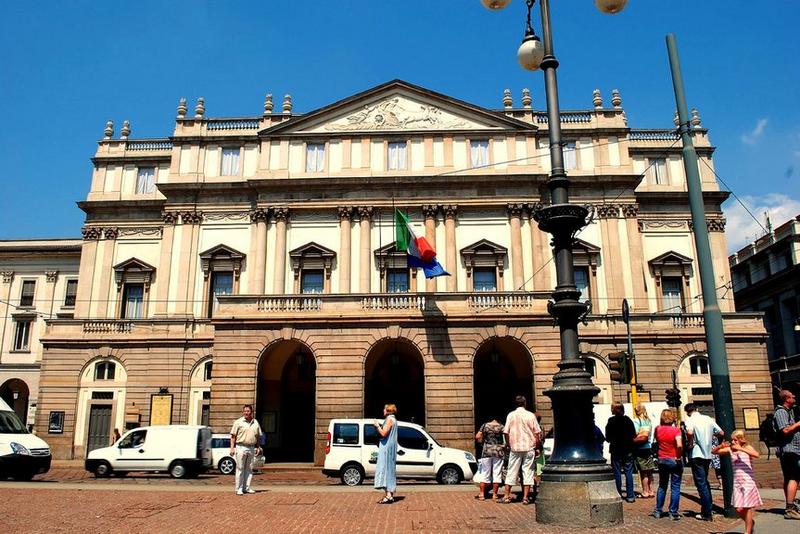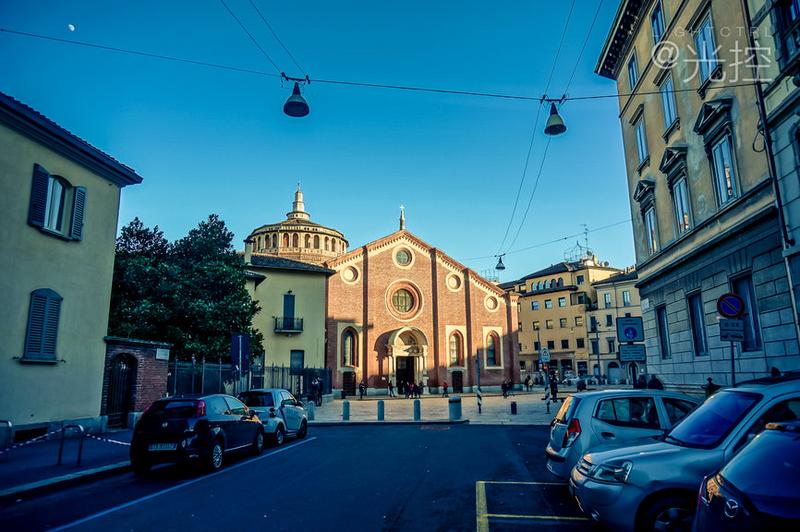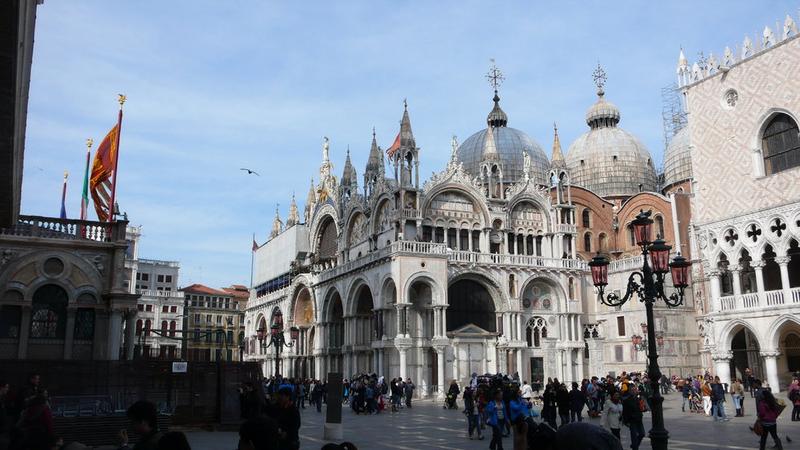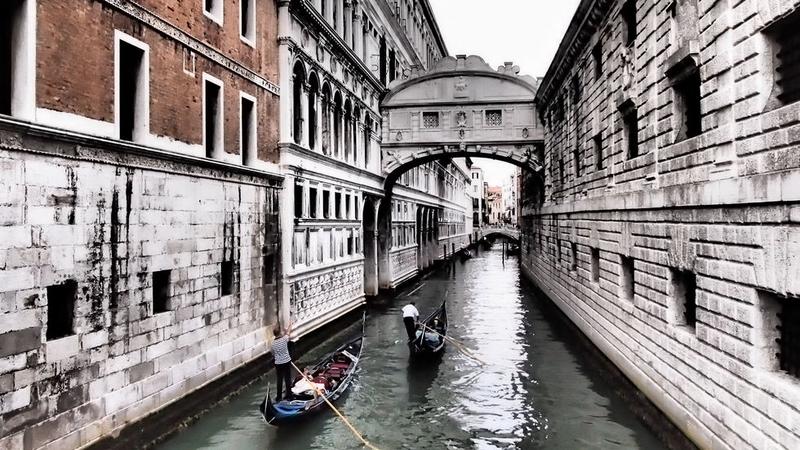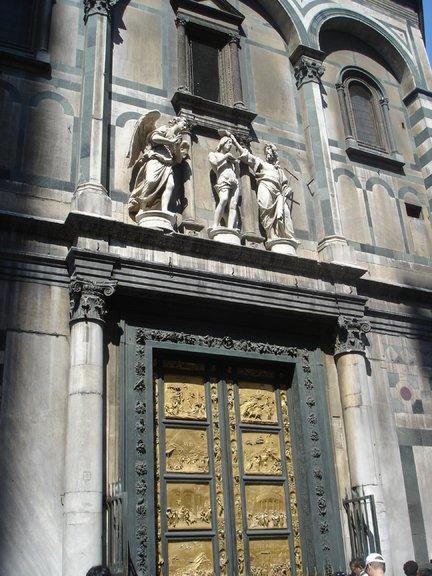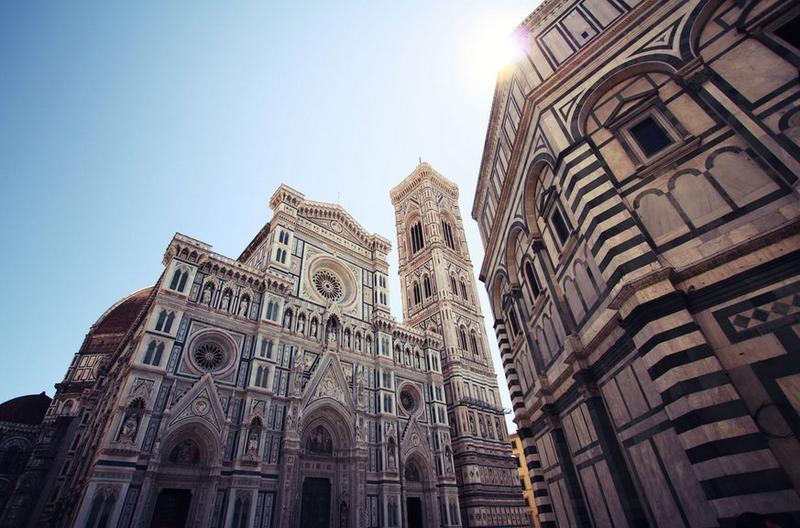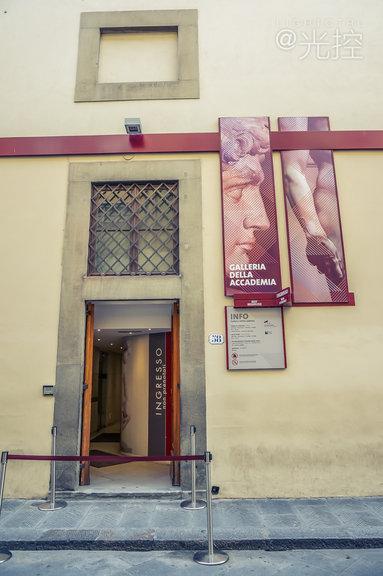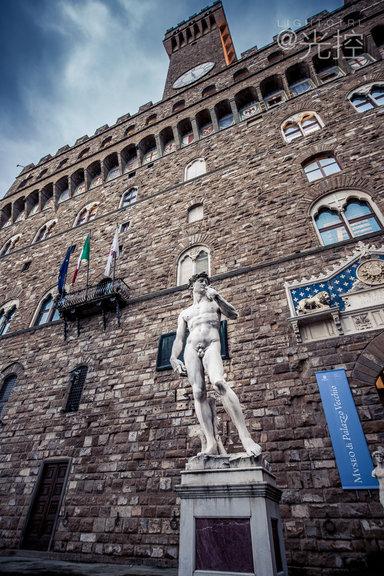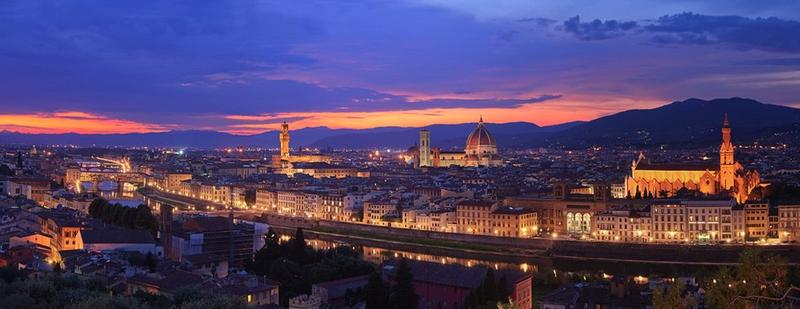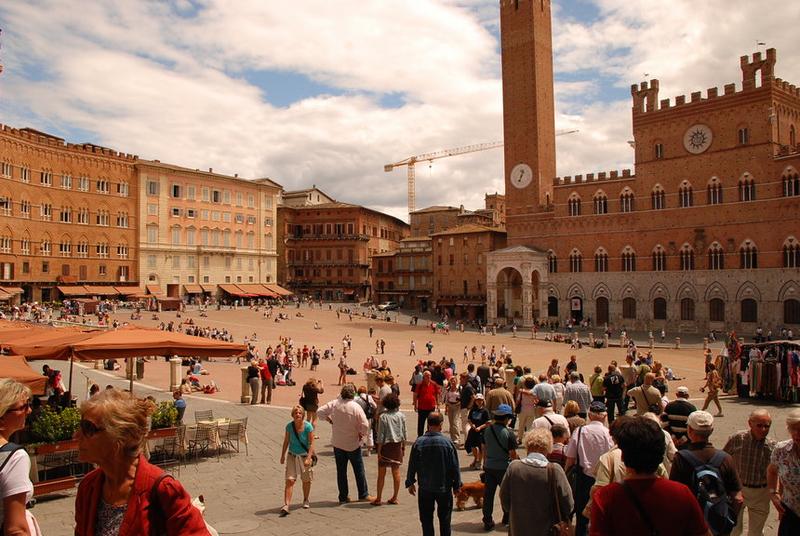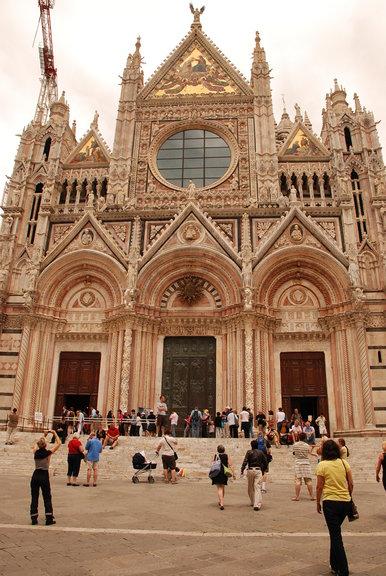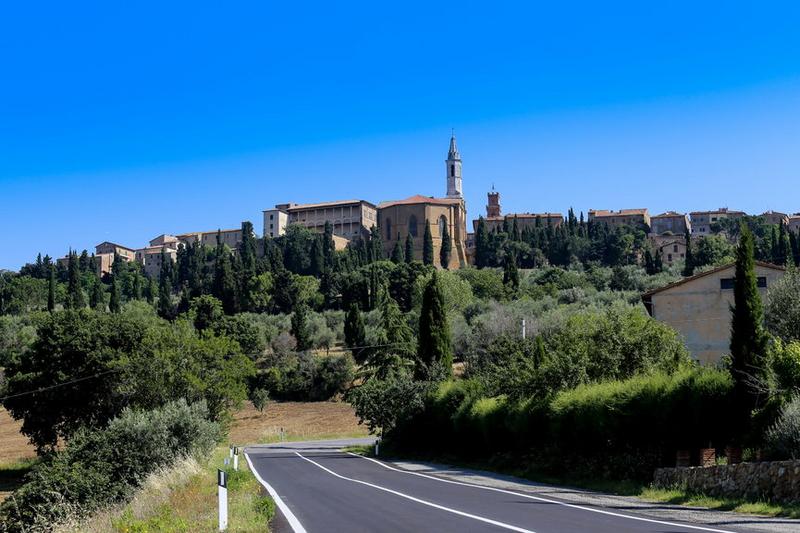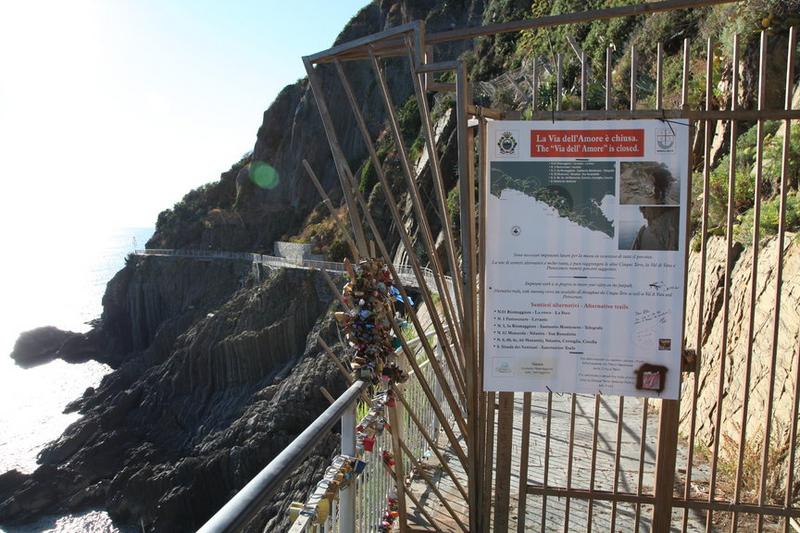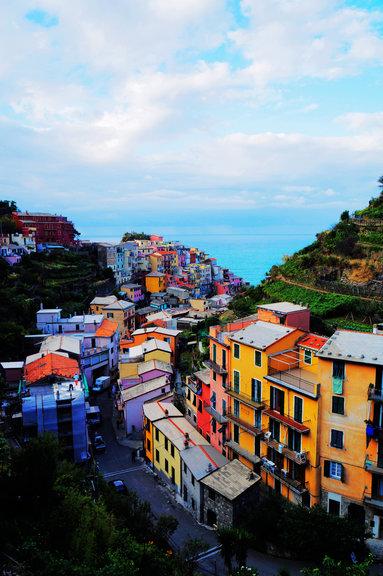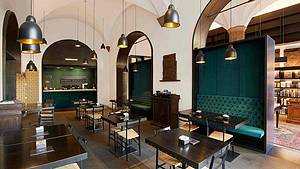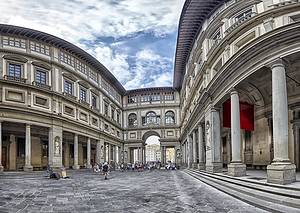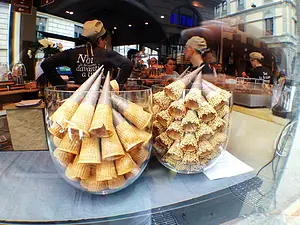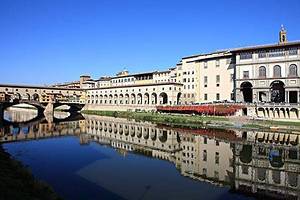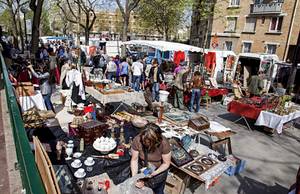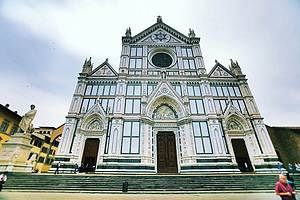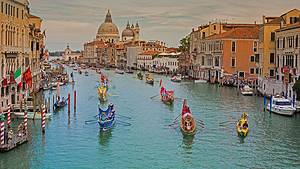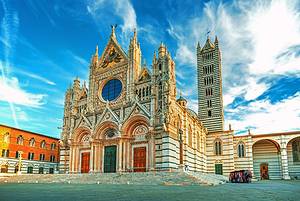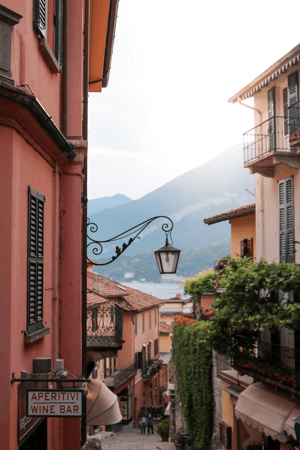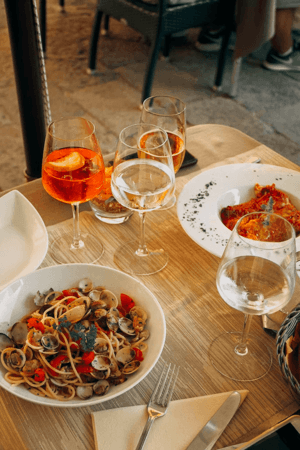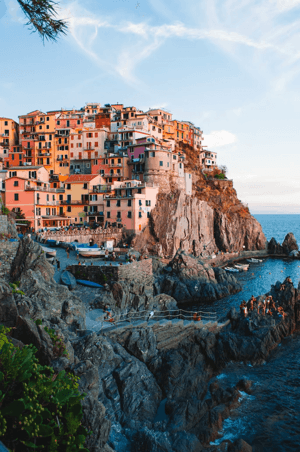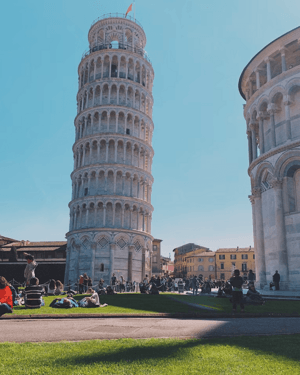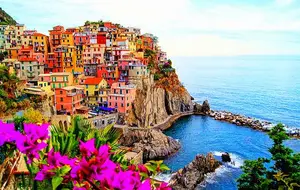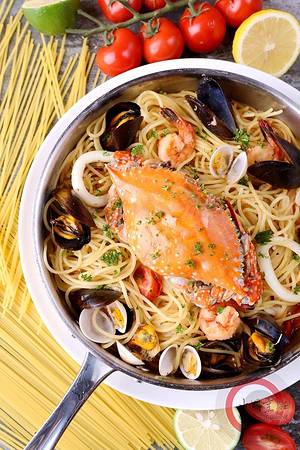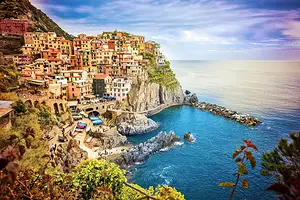Not all potential has been fully utilized in the 7-day self-driving trip
7 cities |
33 attraction(s) |
total distance 443
km
 TIPS
TIPS
Day1
Day2
Day3
Day4
Day5
Day6
Day7
Day1: Milan
5 attraction(s) ·
16 km
1
Equivalent to the city center of Milan, the central square features a bronze statue of the first king of the unified Kingdom of Italy, King Emmanuel II on horseback. To the north is the arcade named after him, Emmanuel II Arcade, now a luxury shopping street. To the east is the Milan Cathedral, and to the southeast is the cathedral's museum.
7
km
2
Also known as Milan Cathedral (Duomo in Italian refers to the city's main cathedral), it was first built in 1386 and is the iconic building in the center of Milan. The main body of the cathedral took over four centuries to be mostly completed in 1812, with the detailing work continuing until 1960 when the final bronze door was installed. Over the years, it has acquired a historical grandeur and multiple styles, with Gothic spires adorned in Baroque decorations, exuding luxury from top to bottom. The golden statue of the Virgin Mary at the top of the cathedral has silently guarded the city, while the glass coffin in the underground crypt houses the remains of Archbishop San Carlo Borromeo, who passed away in 1584. In 1805, Napoleon was crowned here and became the King of Italy. During World War II, the cathedral's main entrance was bombed and the scars can still be seen today.
6
km
3
Once known as the "paradise of opera," it constantly stages famous operas, concerts, and plays throughout the year except for August. Well-known works such as Turandot and Madama Butterfly were premiered here. The Teatro alla Scala is the second theater rebuilt on the same site, as the first theater, the Teatro Ducale, was destroyed by a fire in February 1776. After the incident, 90 wealthy Milanese who owned private boxes in the old theater wrote a letter to Archduke Ferdinand I of Austria, requesting the reconstruction of a new theater and a temporary theater to be used until the new one was completed. The new theater was completed in 1778 on the site of the Church of Santa Maria alla Scala, and it was officially inaugurated on August 3rd, 1778, under the name Nuovo Regio Ducal Teatro alla Scala, with the opera L'Europa riconosciuta by Antonio Salieri as its first performance. Renowned vocal artist Luciano Pavarotti performed here, and Giuseppe Verdi's famous opera Falstaff had its premiere at this theater. The opening ceremony of the theatrical season takes place on December 7th, the Feast of the Milanese Patron Saint. It was damaged during an air raid in 1943 and was rebuilt in 1946. In front of it is the Piazza della Scala, which features Leonardo da Vinci's statue.
3
km
4
Sforza Castle is one of the most important buildings in Milan and a witness to the city's rich history. It overlooks the castle like a grand principality, with high walls and a well-planned park on all sides. Built in the 14th century as a castle by the Sforza Count, it later became the residence of the Sforza family, witnessing the process from its peak to the family's decline. The castle is now converted into a museum by the Milan City Government, which includes the Museum of Applied Arts and Music, the Archaeological Museum, and the Museum of Ancient Art. Its rear gate is called the Gate of Peace, named after the ruler Francesco who transformed it.
1
km
5
The monastery itself is not very famous, but it attracts a constant stream of visitors because of Leonardo da Vinci's mural painting "The Last Supper". However, it is not easy to see the mural as tickets need to be booked in advance. Due to its age and flawed restoration methods in the 19th century, the colors of the mural have faded.
Day2: Venice
6 attraction(s) ·
1 km
1
In order to thank the Virgin Mary for her protection of Venice during the ravages of the "Black Death", the government of the Republic of Venice decided to build a church in 1630, which was officially completed in 1687. This church was designed by the famous architect Baldassare Longhena and is a typical example of Venetian Baroque architecture. The main hall is an octagonal shape topped with a large dome, surrounded by six chapels. The sacristy features murals depicting Old Testament stories, such as "David and Goliath", as well as masterpieces like the ceiling painting by Titian and Tintoretto's "The Wedding at Cana".
The "Black Death" struck Venice twice, claiming many lives. To commemorate this disaster, thank the Virgin Mary for her blessings on Venice, and to pray for health and safety, the Venetians spent 56 years building this church, naming it the "Basilica of Santa Maria della Salute". Today, visitors can admire the stunning Baroque art and the charm of historical culture here.
1
km
2
Piazza San Marco is the central square of Venice, Italy. It is unique among the squares in Europe and is considered the most beautiful living room in Europe by Napoleon.
1
km
3
Located in St. Mark's Square, it was built by Venetian merchants in 829 AD to transport the remains of St. Mark (author of the Gospel of Mark) back to Venice. The entire church is in Byzantine architectural style, combining the essence of both Eastern and Western architecture. It is decorated with many Byzantine-style mosaic paintings, and St. Mark's tomb is located beneath the church's altar. The church also has a paid museum, galleries, and a golden altar.
A masterpiece of Byzantine architecture and art. The church considers the author of the Gospel of Mark as the guardian saint of the city. Throughout history, it has undergone multiple changes, characterized by a Greek-style cross structure and five large domes with mosaics. A replica of one of the four horses of St. Mark is located on the upper part of its facade (the original is a gilded bronze statue displayed in the St. Mark's Museum). From the top of the bell tower, you can enjoy the charming view of the entire city and lagoon.
On November 4, 1966, a high tide flooded Venice. St. Mark's Square was more than 1.2 meters deep in water, leaving over 5,000 people homeless and causing damage to many artworks.
1
km
4
Behind the Governor's Mansion, there used to be a bridge that prisoners had to pass through to get to the prison behind the mansion. It was named the Bridge of Sighs because prisoners often sighed and repented when crossing it. It is recommended to visit at the same time as the Duke's Palace. If time is limited, it can be viewed from the outside. In fact, it is a closed bridge connecting the Duke's Palace and the prison. The Bridge of Sighs has an early Baroque architectural style, resembling a house with a domed top and sealed very tightly, with only two small windows on the side facing the canal. After being sentenced in the Governor's Mansion, serious offenders were taken to the dungeon and would pass through this airtight bridge, only able to catch a glimpse of the blue sky through the small windows. From then on, they lost their freedom and involuntarily let out a sigh. There is also an interesting legend that a condemned prisoner saw his former lover being affectionate with someone else at the other end of the bridge, causing him to deeply sigh. The Bridge of Sighs has since become a place where lovers witness their love, and it is said that lovers who kiss under the bridge will stay together for life. The movie "A Little Romance" was filmed here. Standing on the Bridge of Sighs, one should be able to vividly experience that taking one step forward leads to hell, while taking one step back leads to heaven.
5
There are over 400 bridges in Venice, and the Rialto Bridge is the most famous, also known as the Commercial Bridge. It is made entirely of white marble and is a symbol of Venice. The bridge is 48 meters long, 22 meters wide, and 7 meters above the water surface. It is supported by 12,000 wooden piles inserted into the water at both ends. There is a pavilion in the middle of the bridge, spanning the Grand Canal. The Rialto Bridge was built in 1180, initially as a wooden bridge, and later converted to a drawbridge. During a celebration in 1444, the bridge collapsed due to its heavy load. From 1580 to 1592, it was rebuilt as the current stone bridge. The bridge has a floating pavilion on top, with over 20 jewelry shops and souvenir stalls on both sides, making it one of the most important commercial areas in Venice. It was once the commercial center of Europe for 300 years and served as the background for Shakespeare's famous play "The Merchant of Venice".
1
km
6
You can take a water bus to the Grand Canal before sunset. Water buses are relatively expensive, but the beautiful scenery is priceless: stunning architecture, soft sunlight on the coast, and a charming view of the lined-up Venetian boats.
Day3: Florence
5 attraction(s) ·
8 km
1
The Cathedral of Santa Maria del Fiore is the symbol of Florence, the tallest building in the city and the fourth-largest Catholic cathedral in the world. Designed by the local architect Filippo Brunelleschi, the dome of the cathedral is a miracle in architectural history, as it was built without the use of scaffolding and its hollow structure allows people to climb to the top. The exterior of the cathedral is made of green and white marble, giving it a solemn and exquisite appearance.
Inside the cathedral, you can climb to the top of the dome through a small door on the side. Although it is a challenging process with narrow passageways and many turns, once you reach the top, you can have a panoramic view of the entire city of Florence. The city's medieval urban layout, with its golden roofs, gray or white walls, narrow streets, and the sound of church bells, remains largely unchanged. The top platform of the cathedral is not large, but the wind is strong, so safety precautions should be taken.
Across from the Cathedral of Santa Maria del Fiore is its affiliated building, the Baptistery of San Giovanni. The most famous feature of this octagonal building is its golden door, which is actually made of brass and has remained vivid for over 600 years. Michelangelo praised it as the "Gate of Paradise." The golden doors depict ten reliefs based on biblical stories. To protect the original artifacts, they are kept inside the cathedral, and what people see in the baptistery is a 1:1 replica.
Beside the Renaissance-style cathedral is the Gothic-style bell tower, known as Giotto's Campanile, designed by the famous painter Giotto. It is still functioning today.
1
km
2
The greatest sculptor of the Renaissance period, Michelangelo, greatly admired this group of reliefs, calling it the "Gate of Paradise." Lorenzo Ghiberti was only 23 years old when he was commissioned to design the baptistery, and by the time the entire project was finished, he was 73. As a meticulous perfectionist, he repeatedly cast bronze molds until he deemed the reliefs perfect and flawless. In 1456, the gilded bronze door panels were finally installed on the east side of the baptistery, depicting stories from the Old Testament. Originally planning to install 28 panels depicting Old Testament scenes, Ghiberti later decided to carve only ten larger relief panels. The main scenes include: Adam and Eve, Cain and Abel, Noah, Abraham, Isaac, Esau and Jacob, Joseph, Moses, Joshua, David, Solomon, and the Queen of Sheba.
1
km
3
The Giotto's Bell Tower is located next to the Cathedral of Santa Maria del Fiore, facing the Baptistery of Florence's St. John. It was designed by the famous painter Giotto, hence also known as the Giotto's Bell Tower (Campanile di Giotto). This bell tower is in the Gothic style, with a square plan measuring 14.45 meters in circumference and four polygonal buttresses that are 84.7 meters high at the corners. The tower is divided by four vertical and four horizontal lines, and it is adorned with rich sculptures and various colors of marble inlays. Its magnificent architecture and clever design have earned praise from many art enthusiasts.
1
km
4
The Republic Square was the central square of this city during the Roman Empire and the Middle Ages, and later developed into the old Jewish quarter. In the 19th century, when it briefly became the capital of Italy from Florence, the Jewish quarter was gradually cleared and transformed into its current appearance, leaving traces that can still be seen. Surrounding it are Florence's oldest cafés, with the most famous being the Red Jacket Café on the south side of the square.
6
km
5
The Accademia di Belle Arti di Firenze, also known as the Florence National Academy of Fine Arts, is the highest institution of art in the world. It was founded in 1339 and is considered the first art academy in the world. It has had a significant impact on the art world and art education. The academy is famous for training many renowned artists, including Leonardo da Vinci and Michelangelo. The academy's museum houses the original sculpture of Michelangelo's David.
Day4: Florence
4 attraction(s) ·
6 km
1
The Uffizi Gallery is one of the most important art museums in Italy and in Europe. It contains a rich collection of artworks, including pieces by Leonardo da Vinci, Michelangelo, and Donatello, all of whom were sponsored by the Medici family during the Renaissance period. The museum houses over 100,000 works of art divided into 46 exhibition halls, so it is advisable to arrive early and prioritize which exhibits to see. The most famous works include Botticelli's "Primavera" and "The Birth of Venus," Leonardo da Vinci's "Adoration of the Magi," Michelangelo's "Holy Family," and Titian's "Venus of Urbino." The term "Uffizi" means "offices" in Italian, indicating that the museum was once the Medici family's administrative office. The family's descendants donated all their collections to the government, and the Uffizi Gallery became a public museum. Today, the museum primarily displays paintings, while the sculpture collection is housed in the Bargello Museum. During peak season from May to September, it is advisable to make online reservations in advance and arrive early to avoid long queues.
1
km
2
The Old Bridge, the most famous and oldest bridge over the Arno River, has witnessed the prosperity and decline of the entire city of Florence. It was built in the Middle Ages, and despite being ravaged by war and flood, it has stood firm, becoming a must-visit place for tourists in Florence. Initially, it was said to be a place for selling pork, but later the Medici Grand Dukes found the smell unbearable and ordered the butchers out, replacing them with jewelry shops. In order to avoid walking the same path as ordinary people, the Medici Grand Dukes built the famous Vasari Corridor on top of the old bridge to connect their office in the Palazzo Vecchio and their residence in the Palazzo Pitti. Nowadays, the Old Bridge is the gathering place of the most famous gold and jewelry shops in Florence, most of which are handmade. It is said that the Old Bridge was also the meeting place of Dante and his wife, so many couples still lock love padlocks on the railing of the bridge.
1
km
3
Piazza della Signoria, also known as the City Hall Square, is the central square of Florence city. It is famous for its numerous sculptures, including the replica of Michelangelo's David. Other notable sculptures include the Fountain of Neptune, the equestrian statue of Cosimo I, lion sculptures, and the head of Medusa. The square is surrounded by the Palazzo Vecchio, the Uffizi Gallery, the Loggia dei Lanzi, and many cafes and bars. It is a popular gathering place for locals and tourists alike, and it remains the political center of Florence. The impressive 14th-century Palazzo Vecchio and its crenelated tower dominate the square.
6
km
4
Piazzale Michelangelo is located on a hill in the southern part of the city center of Florence. From the square, you can enjoy a panoramic view of the city. The square is famous for the statue of David, the symbol of Florence, making it the first stop for many tourists visiting Florence.
Day5: Siena > Pienza
4 attraction(s) ·
57 km
1
Campo Square (also known as Shell Square because of its shape) is the center of the city of Siena, and one of the largest surviving medieval squares in Europe. Facing the square is the Siena Town Hall and Tower, which houses the Municipal Museum with numerous paintings from the Sienese School, including Ambrogio Lorenzetti's "Allegory of Good Government" and "Allegory of Bad Government." The tower, called Torre di Mangia, is the tallest building in Siena and the second tallest tower in Italy, reaching a height of 102 meters. Visitors can climb the 55 flights of stairs to the top and enjoy a panoramic view of the beautiful city of Siena. The square is surrounded by many cafes, souvenir shops, restaurants, and noble residences. The 11 roads leading from the square extend to all corners of the city. On one side of the square is the famous Fonte Gaia, a joyous fountain dating back to the 14th century and one of the earliest fountains created using hydraulic systems. The fountain's reliefs depict religious scenes. Another famous feature of Campo Square is the biannual horse race known as the Palio, which originated in the Middle Ages and is a major event for the 17 districts of Siena. Before the race, there is a grand procession in period costumes and circus performances. Although the entertainment value of the race now outweighs its athletic significance, the intensity of the competition rivals that of the Olympic Games!
2
km
2
Museo dell'Opera metropolitana del Duomo
This is a very large church, and if it were completed, it might be the largest church in the world; unfortunately, it was only halfway built and became the current Siena Cathedral. The unfinished part has been transformed into a museum, and visitors can climb to the top floor of the museum to enjoy the panoramic view of the Tuscan mountains. Like other churches, Siena Cathedral is built with black and white marble, but in a unique pattern that resembles zebra stripes, which is also the style of Siena's football team uniforms. The Siena Cathedral is located near Piazza del Campo, and its iconic black and white tower can be seen from a distance, so just head towards the tower. Since there are no motor vehicles in the old town, there is no public transportation available.
56
km
3
Located on the south side of Piazza Pio II, the façade features typical Renaissance style, with a marble niche designed by architect Bernardo Rossellino (1409-1464) and five groups of sculptures created by Sienese artists that are particularly noteworthy.
1
km
4
Pienza is a municipality in the Siena province of Tuscany, Italy. It is a Renaissance ideal town founded by Pope Pius II, with Gothic architecture and influences from the German style. The main square, Piazza Pio II, features 15th-century buildings such as the church, Piccolomini Palace, bishop's palace, and a town hall with a serrated tower. It was inscribed on the UNESCO World Heritage List in 1996.
Day6: Pisa > Cinque Terre
5 attraction(s) ·
100 km
1
The Leaning Tower of Pisa is an independent bell tower of the Cathedral of Pisa in Italy, a world-famous landmark and one of the symbols of Italy. Its construction began in 1173 and was completed in 1372. The tower leans to the southeast due to uneven foundations and soft soil. It is known for its unique beauty and architectural features. The tower, along with the adjacent cathedral, baptistery, and cemetery, was designated as a UNESCO World Heritage Site in 1987. It is located in the Piazza dei Miracoli in Pisa, Tuscany, and is part of a group of religious buildings in a unified Romanesque architectural style.
2
Miracle Square is the main attraction for many tourists visiting Pisa. It includes Pisa Cathedral, the Baptistery, the Leaning Tower of Pisa, and the cemetery. The square was named after a description in the 1910 novel "Forse che si forse che no" by Italian writer D'Annunzio. Pisa Cathedral is a representative example of Romanesque architecture, built in the 12th century and later restored and expanded. The most valuable artistic feature is the former main entrance, now moved to the side. Across from the cathedral is the cylindrical Baptistery of St. John, which has a spiral staircase to the top. Behind the cathedral is the famous Leaning Tower of Pisa, originally built as the bell tower of the cathedral. The tower's history is well-known, and it has undergone ongoing restoration work. The tower's tilt is now under control and stable. Below the tower is a museum, and the cemetery is located inside the surrounding walls. The square also has three large lawns, with one near the city gate for visitors to rest, while the other two are off-limits. On the other side of the square, there are shops selling souvenirs and snacks.
93
km
3
One of the five towns in Cinque Terre, the southernmost and largest town. The office of the national park is located in this town. The coastal promenade from Manarola to Riomaggiore is called "Via dell'Amore" or the "Path of Love". It is the shortest and easiest section of the trail, about one kilometer long, with a paved road carved into the cliffs. On one side is a mountain rock, and on the other side is the layered waves of the Ligurian Sea. Along the path, there is a "modernist" kissing statue and lockets hanging on the surrounding railings. There is also a short tunnel along the way with romantic and cheesy phrases written on the walls. From the train station to the town on the mountainside, you have to walk through an underground passage. The mural on the walls of the passage depicts how the ancestors of Cinque Terre built the five towns with their bare hands and simple tools. Exiting the passage, you will reach the steep main street of the town, Via C. Colombo, with various restaurants, convenience stores, and souvenir shops lining both sides. On the other side of the train station is the small pier of Riomaggiore, where fishing boats and tourist boats for the Cinque Terre coastline often dock. The cliffs on both sides of the pier are filled with tall and colorful buildings, adding a lovely atmosphere to the harbor. Walking south along the path from the pier, you can reach Fossola Beach, where you can observe vegetation, seabirds, and enjoy some beach activities such as wading, renting a kayak or raft.
1
km
4
The Path of Love (Via dell'Amore) is a narrow path that connects Manarola and Riomaggiore. It is the shortest and most comfortable hiking trail among the five villages, taking only 20 minutes to complete. The scenery is beautiful with huge cliffs, terraced fields, and cliffs overlooking the sea. The Path of Love was originally built for the construction of the railway between the two villages, but it has become a romantic spot with lock walls, cactus leaves filled with promises, messages and graffiti on the walls, and couples expressing their love everywhere. The iconic stone bench carved into a kissing silhouette is a must-visit spot for taking photos. Length: 1 kilometer. Estimated time: 30 minutes.
7
km
5
One of the five villages in Cinque Terre. Located at the end of the Corniglia-Manarola Trail, the colorful Manarola suddenly appears as a miracle, leaving people in awe. Similar to Corniglia, Manarola is also built on rocky cliffs. There are no beaches or ports, only a small landing platform. On sunny days, many people sunbathe on the platform and the surrounding rocks, which adds to the scenery. It is said that Manarola is the village in Cinque Terre with the most grapevines, and Sciacchetrà is a famous sweet wine in the area. In addition, there are many medieval relics in this town. At the northern end of Via Discovolo is Piazzale Papa Innocenzo IV, whose bell tower used to be used as a watchtower. Across from it is the Church of San Lorenzo, built in 1338, which houses a 15th-century multi-panel painting. There is also a path uphill on Via Rollandi, which passes through many vineyards and wineries and leads to the top of the mountain, where you can overlook the town and the beautiful surroundings.
From December 8 to early February, 300 light installations symbolizing the birth of Jesus are scattered in the terraced fields of Manarola. At night, all the designs are illuminated, making this colorful town even more dazzling and turning it into a sky full of stars. This is the largest nativity scene in the world.
Day7: Cinque Terre > Milan
4 attraction(s) ·
258 km
1
Corniglia is one of the five villages of Cinque Terre. It is located on the coastal cliffs, making it the highest village in Cinque Terre. The colorful four-story houses in contrast with the gray-black rocks add a dramatic touch to the town's geographical location. The main street, Via Fieschi, is lined with charming homes and shops. At the end of the street is Santa Maria Belvedere, where you can enjoy a panoramic view of the Ligurian Sea. In autumn, you can also smell the fragrance of grapes being harvested in the mountain orchards for wine-making.
7
km
3
Another name for the stadium is Giuseppe Meazza Stadium (Stadio Giuseppe Meazza), only 6 kilometers away from the center of Milan. It is the home ground of both AC Milan and Inter Milan, two of the three giants in the history of Serie A, and is also one of the most famous football stadiums in the world. The stadium was named after the famous player Giuseppe Meazza to commemorate him in the 1930s and 1940s, but most people still refer to it as San Siro Stadium.
Besides during matches, the stadium is also open to regular visitors during non-match periods. Visitors can tour the stadium.
7
km
4
This busy and fashionable street stretches from Piazza della Scala to Piazza Cavour in the northeast. There are several famous buildings along the street, such as the Poldi Pezzoli Museum and the elegant Grand Hotel et de Milan. A section of Via Manzoni forms the northwest boundary of Milan's high-end shopping area, the "Fashion Quadrilateral," which is filled with luxury brand retail stores.
The Poldi Pezzoli Museum, located at Via Manzoni 12, specializes in collecting works by Italian and Dutch/Flemish artists from northern Italy. It was originally a private collection of Pezzoli and donated to the city of Milan in 1879.


